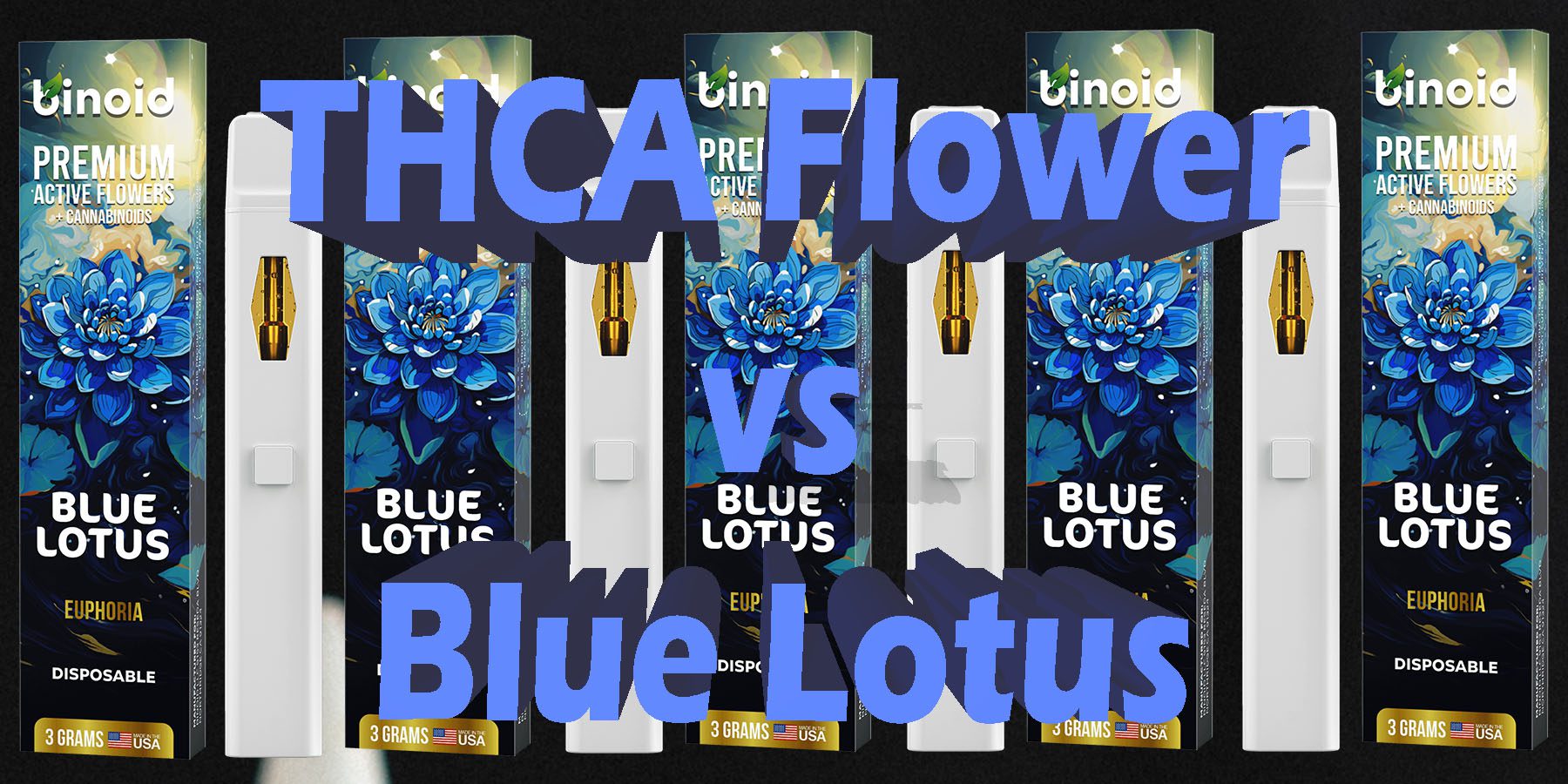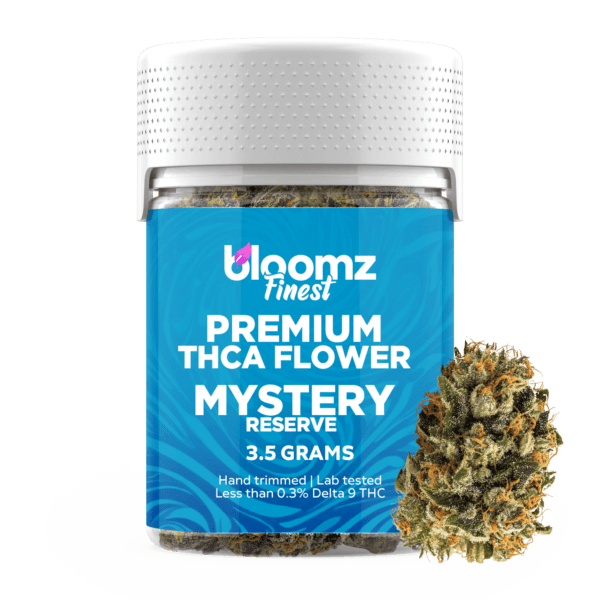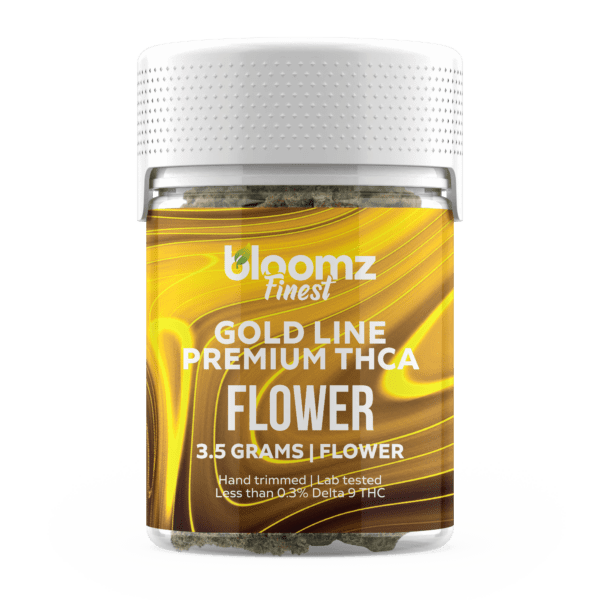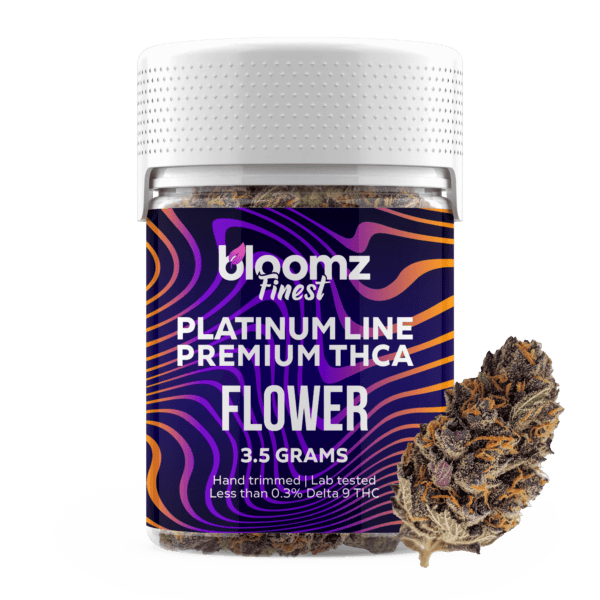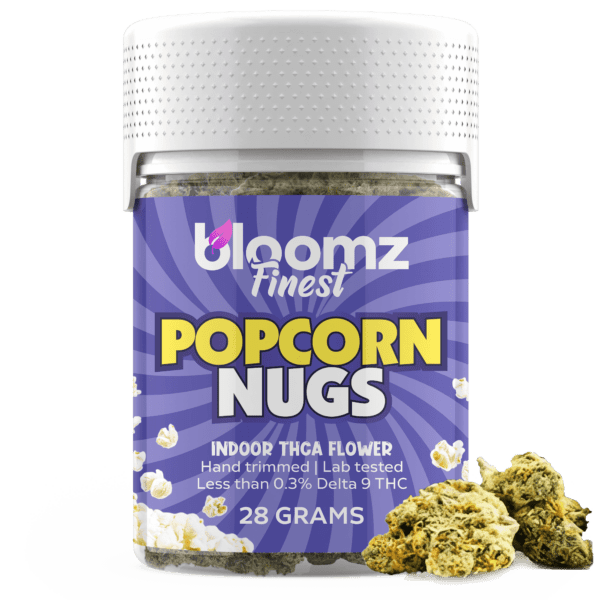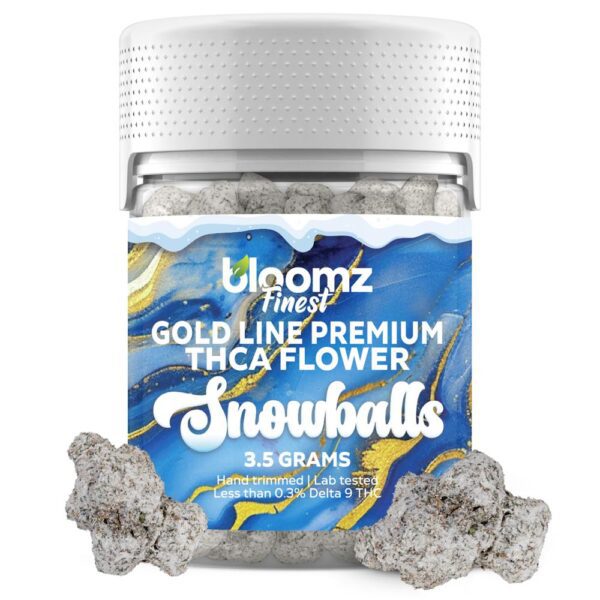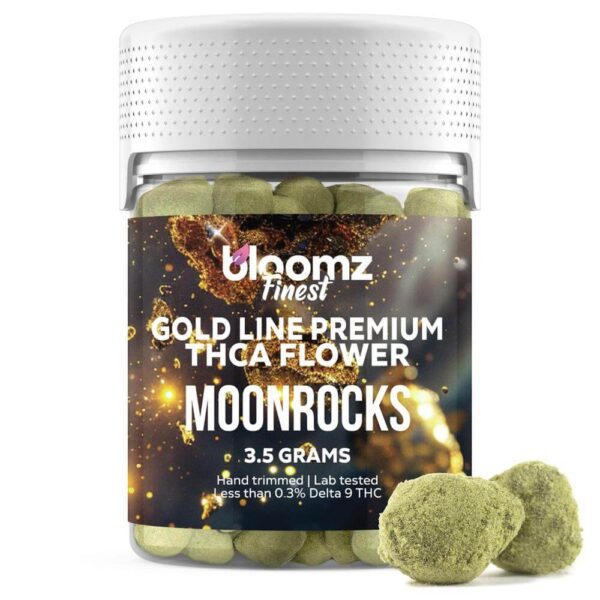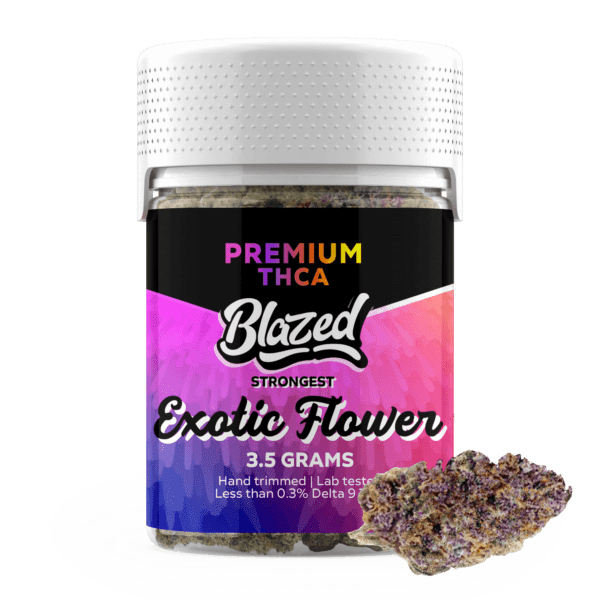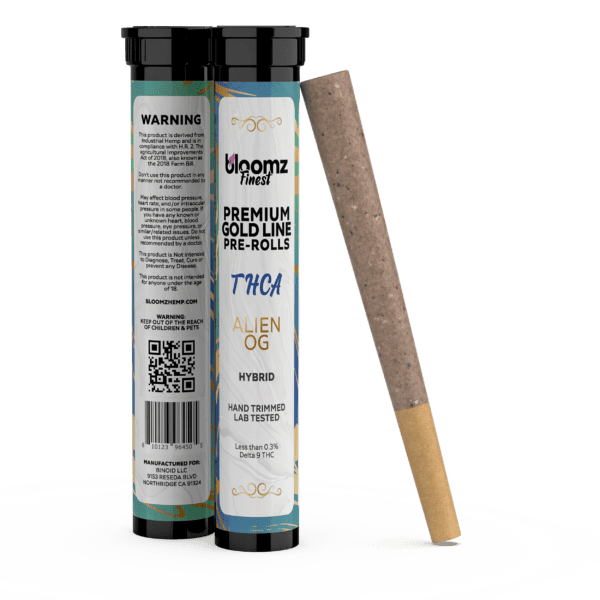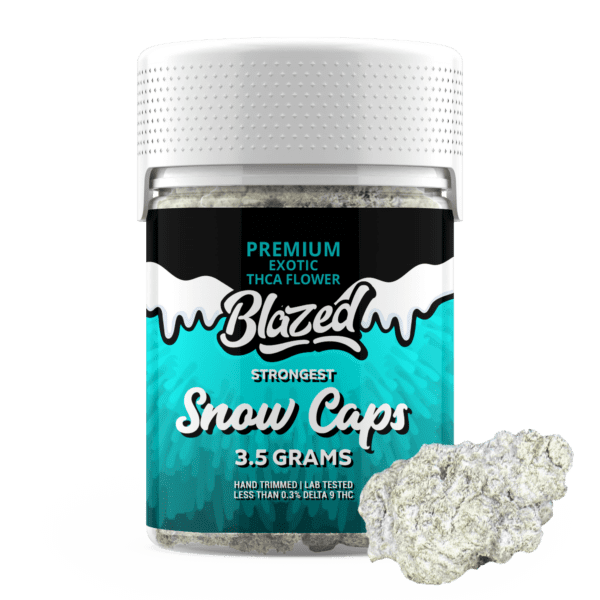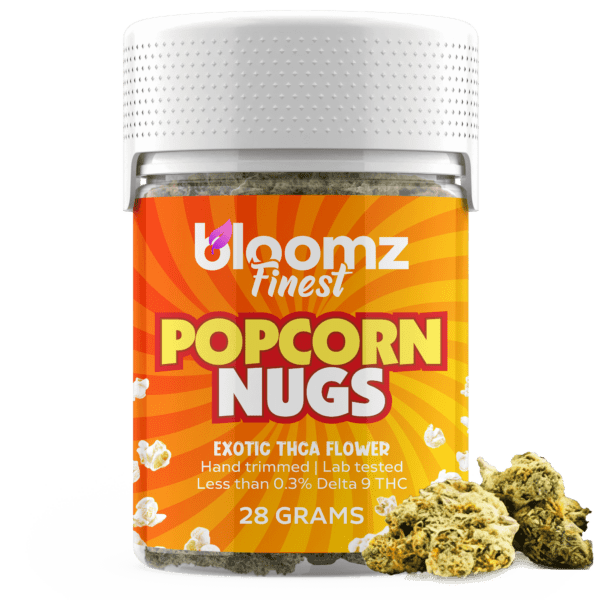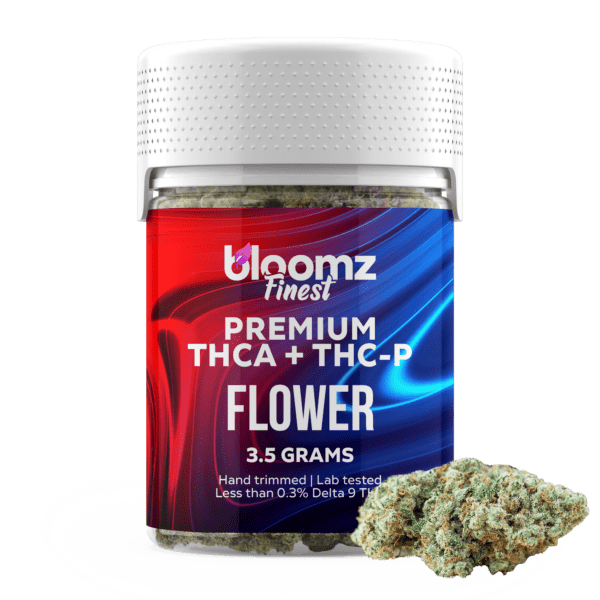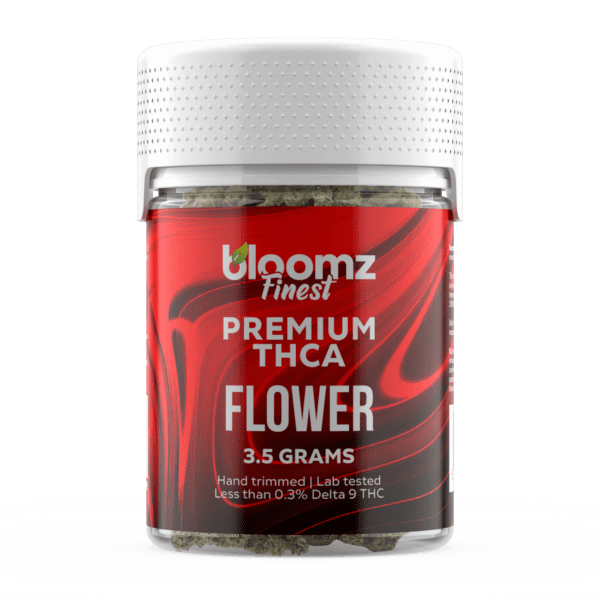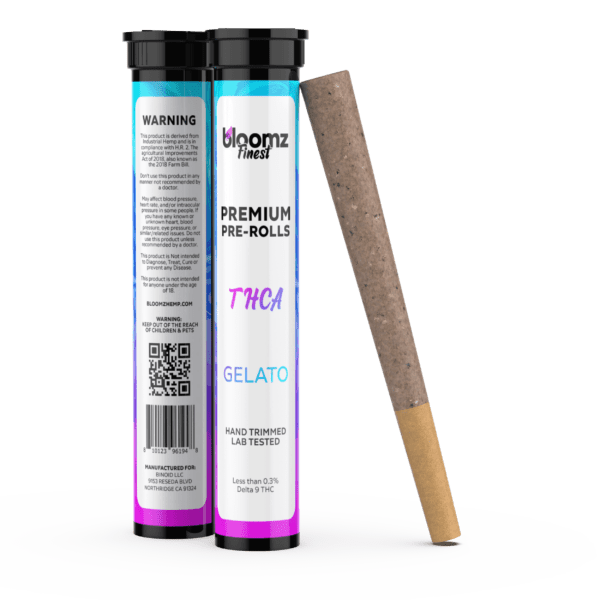In the ever-expanding universe of natural botanicals, a fascinating juxtaposition is emerging between ancient tradition and modern cultivation science. On one side stands a product of meticulous contemporary horticulture, born from a deep understanding of plant chemistry and legal frameworks. On the other rests a sacred flower, steeped in millennia of history, its petals intertwined with the rituals and beliefs of civilizations long past. This is not merely a comparison of two plants, but a dialogue between two distinct philosophies of botanical engagement.
Navigating this landscape requires more than a passing curiosity; it demands a deeper look into their origins, compositions, and the unique experiences they offer. The choice between them is a personal journey, one that explores different pathways to achieving a sense of tranquility and elevated consciousness. As we peel back the layers of both, we uncover a world rich with history, science, and profound potential for personal discovery.
To Buy THCA Flower Click Here
Recommended products
-
THCA Flower – Mystery Reserve
$41.99$79.99 -
THCA Flower – Indoor Exotics – Gold Line
$37.99$69.99 -
THCA Flower – Platinum Line
$49.99$79.99 -
THCA Smalls
$149.99$256.99
Why It’s Important to Breakdown the Matchup of THCA Flower vs. Blue Lotus
In today’s dynamic and often overwhelming marketplace of wellness and recreational botanicals, clarity is paramount. The sheer volume of available options can create a sense of confusion, making it difficult for individuals to make informed decisions that align with their personal preferences and goals. Breaking down the comparison between THCA flower and Blue Lotus serves a vital purpose: it transforms ambiguity into understanding.
This analysis is not about declaring a winner, but about illuminating the distinct characteristics of each contender, thereby empowering the consumer to choose with confidence. By dissecting their origins, chemical makeup, legal standing, and experiential profiles, we provide a comprehensive roadmap for anyone navigating this exciting terrain. This detailed examination helps to demystify the nuances of each plant, ensuring that users can appreciate their unique attributes fully and responsibly.
Here are the primary reasons why a thorough breakdown of this matchup is so crucial:
-
Clarifying Chemical and Experiential Differences: At a surface level, both might be seen as smokable flowers that offer a departure from the ordinary. However, their fundamental mechanisms and the nature of the experiences they facilitate are vastly different. THCA flower’s primary compound, tetrahydrocannabinolic acid (THCA), is a non-psychoactive cannabinoid acid that transforms into the well-known psychoactive Delta 9 THC upon heating. This process, known as decarboxylation, is the gateway to its potent, euphoric effects. In stark contrast, Blue Lotus owes its character to alkaloids like apomorphine and nuciferine, which interact with the body’s systems in a completely different manner, fostering a dreamy, serene, and subtly psychoactive state. Understanding this core chemical divergence is the first and most critical step in appreciating why their effects profiles—one often characterized by intense euphoria and sensory enhancement, the other by tranquil lucidity and relaxation—are so distinct. A detailed comparison prevents users from conflating the two or having misguided expectations about what either can provide.
-
Navigating Vastly Different Legal Landscapes: The legality of plant-based products in the United States is a complex and shifting tapestry, and THCA Flower and Blue Lotus occupy very different spaces within it. THCA Flower’s legality is a direct consequence of modern legislation, specifically the 2018 Farm Bill. This federal law legalized hemp and its derivatives, defining hemp as any cannabis plant containing no more than 0.3% Delta 9 THC by dry weight. Since THCA is not Delta 9 THC in its raw form, high-THCA flower falls into a legal gray area, making it federally compliant under this definition, though some states have enacted their own stricter regulations. Conversely, Blue Lotus’s legal status is rooted in a long history of being unregulated. It is not a controlled substance at the federal level and is legal in most states, with the notable exception of Louisiana, which prohibits its consumption. A detailed breakdown is essential for consumers to understand their local laws, purchase from compliant sources, and engage with these botanicals responsibly and without legal repercussions.
-
Appreciating Divergent Cultural and Historical Contexts: To truly understand a botanical, one must look beyond its chemistry and appreciate its story. THCA flower is a product of the 21st century, a testament to agricultural innovation, scientific discovery, and the evolving legal cannabis market. Its history is being written now, in laboratories, grow facilities, and legislative chambers. Blue Lotus, on the other hand, is an ancient entity with a history stretching back over 3,000 years. It was revered by the ancient Egyptians, depicted extensively in their art and hieroglyphs, and used in sacred ceremonies to connect with the divine and induce states of profound tranquility. Recognizing this difference is about more than trivia; it’s about context. Choosing THCA Flower is engaging with cutting-edge cultivation, while choosing Blue Lotus is partaking in a tradition that has spanned millennia. This distinction can profoundly shape a user’s connection to and appreciation for the plant they choose.
-
Informing Method of Consumption and Application: The ways in which these two flowers are typically used and prepared also differ significantly, influencing the overall experience. THCA Flower is almost exclusively consumed via methods involving heat to trigger decarboxylation, such as smoking in joints or pipes, vaporizing with specialized devices, or being used in edibles where it is heated during the cooking process. The goal is the chemical conversion to Delta 9 THC. Blue Lotus offers more versatility. While it can be smoked or vaped, it has a long tradition of being prepared as a tea or infused into wine, allowing its alkaloids to be absorbed through digestion. This leads to a slower onset and potentially a longer, more subtle experience. Furthermore, Blue Lotus is increasingly found in modern product formats like gummies and vape cartridges, often blended with other botanicals or cannabinoids. A proper breakdown helps users select a consumption method that best suits their lifestyle, comfort level, and desired outcome.
-
Promoting Responsible and Intentional Use: Ultimately, the most important reason to detail this comparison is to foster a culture of responsible and intentional consumption. When users are armed with comprehensive knowledge, they can move beyond impulsive choices and instead select a botanical that genuinely aligns with their intentions—whether that’s seeking a powerful, euphoric lift for a social gathering or a gentle, calming essence for a quiet evening of reflection. Understanding the potential intensity, duration, and nature of the effects of both THCA flower and Blue Lotus allows individuals to prepare their set and setting accordingly, ensuring a positive and beneficial experience. It encourages respect for the power of these plants and moves the conversation from a simple “what does it do?” to a more nuanced “what is the right experience for me in this moment?” This level of informed decision-making is the cornerstone of a healthy and sustainable relationship with any botanical.
Contender #1: THCA Flower
Emerging from the intricate interplay of botanical science and evolving legal definitions, THCA flower has rapidly ascended as a prominent figure in the modern cannabinoid market. It represents a fascinating paradox: a product derived from the cannabis plant that exists in a state of perfect legal compliance in its raw form yet holds the latent potential for profound psychoactive experiences. This contender is the epitome of modern ingenuity, leveraging a deep understanding of plant chemistry to deliver a powerful and sought-after effect while navigating the complex regulatory framework of the United States.
For many enthusiasts, it is the answer to a quest for authentic cannabis experiences within the bounds of federal law. Its appeal lies not just in its potency, but in the familiar ritual and rich aromatic diversity that has long been cherished by cannabis connoisseurs, now made accessible in a new and innovative way. THCA flower is a testament to the relentless drive for innovation within the industry, offering a bridge between the traditional and the contemporary.
At its core, tetrahydrocannabinolic acid (THCA) is one of the most abundant cannabinoids found in raw, unheated cannabis plants. It’s the acidic precursor to the famous psychoactive compound, Delta 9 THC. In its natural state within the plant’s trichomes, THCA is a non-psychoactive molecule, meaning that consuming it raw—for instance, by juicing fresh cannabis leaves—will not produce the euphoric or intoxicating effects associated with THC. The molecular structure of THCA includes a carboxylic acid group (COOH) that prevents it from binding effectively with the CB1 receptors in the brain, the primary sites of THC’s psychoactive activity.
This chemical distinction is the entire basis for its unique position in the market. The magic, so to speak, happens through a process called decarboxylation, which is simply the removal of that carboxylic acid group. This transformation is most commonly achieved by applying heat, whether through the flame of a lighter, the heating element of a vaporizer, or the heat of an oven during the preparation of edibles. When heated, THCA (C22H30O4) converts into Delta 9 THC (C21H30O2), unlocking its full psychoactive potential.
Recommended products
THCA flower is, quite simply, cannabis flower that has been selectively cultivated and harvested to feature a high concentration of tetrahydrocannabinolic acid (THCA) while maintaining a concentration of Delta 9 THC that’s at or below the 0.3% legal limit. This makes it legally classified as hemp, not marijuana, under federal law. The production of high-quality THCA flower is a testament to the precision of modern agricultural practices, combining sophisticated genetics with meticulous environmental control to achieve this specific chemical profile.
It looks, smells, and feels identical to traditional high-THC cannabis flower because, for all intents and purposes, it is—just harvested and tested at a point where the vast majority of its primary cannabinoid is still in its non-psychoactive acidic form. The production process for THCA flower is a delicate and science-driven endeavor:
-
Genetic Selection: The process begins with the careful selection of cannabis genetics. Cultivators choose strains that are naturally predisposed to producing high levels of THCA. These are often classic, well-loved cannabis strains whose genetics have been refined over generations to maximize cannabinoid and terpene production.
-
Cultivation: The plants are grown under optimized conditions. For indoor grows, this involves precise control over light cycles, temperature, humidity, and nutrient delivery to encourage the development of dense, resinous flowers packed with crystalline trichomes, which are the plant’s cannabinoid factories.
-
Harvesting: The timing of the harvest is absolutely critical. The plants must be harvested before the THCA has had a chance to naturally degrade into Delta 9 THC due to exposure to light and heat over time. This ensures the final product remains within the legal 0.3% Delta 9 THC threshold.
-
Curing: After harvesting, the flower undergoes a slow and careful curing process. The buds are dried in a controlled environment to reduce moisture content, which is essential for a smooth smoking or vaping experience and proper preservation. This process also helps to enhance the flower’s terpene profile, which is responsible for its unique aroma and flavor.
-
Lab Testing: Before being packaged and sold, every batch of THCA flower must be sent to a third-party laboratory for a full panel of tests. The most important test is for cannabinoid potency, which provides a Certificate of Analysis (COA) confirming that the Delta 9 THC level is below the 0.3% legal limit, while also showing the high percentage of THCA.
The market for THCA flower has blossomed with a remarkable variety of product types and quality tiers, catering to a wide spectrum of consumer preferences and budgets. This diversity mirrors the traditional cannabis market, offering everything from affordable smalls to connoisseur-grade exotic nugs, each with its own unique characteristics. Understanding these different categories allows consumers to make more informed choices about the product that best suits their needs.
The grading systems, in particular, provide a useful shorthand for assessing the overall quality of the flower, considering factors like appearance, aroma, trichome density, and bud structure. These classifications are not just marketing terms; they represent a commitment to a certain standard of cultivation and post-harvest care, ensuring that consumers know what to expect from their purchase:
-
Indoor THCA Flower: This category represents the gold standard for many connoisseurs. Grown in highly controlled indoor environments, these plants receive optimized lighting, climate control, and nutrient regimens. The result is a visually stunning product with dense, perfectly formed buds that are typically coated in a thick layer of crystalline trichomes. Indoor flower is celebrated for its potent aroma and rich flavor profiles, as the controlled environment allows for the maximum expression of the plant’s terpenes.
-
Outdoor THCA Flower: Cultivated under the natural sun, outdoor THCA flower offers a more rustic and traditional cannabis experience. While it may not always have the same pristine “bag appeal” as indoor flower, well-grown outdoor buds can be incredibly potent and flavorful, often expressing a unique terroir influenced by the soil and climate in which they were grown. This option is often more affordable and appealing to those who appreciate a more natural and sustainable cultivation method.
-
THCA Smalls: As the name suggests, “smalls” are smaller-sized buds from a THCA flower harvest. These are not lower quality in terms of chemical composition; they simply didn’t grow to the same size as the main colas (the largest buds at the top of the plant). Smalls offer an excellent value proposition, providing the same potency and terpene profile as their larger counterparts but at a more accessible price point, making them a popular choice for budget-conscious consumers.
-
THCA Nugs: This is the standard format for flower, referring to the fully-formed, trimmed buds that are the primary product of a harvest. These are the “A-grade” buds that growers are most proud of ,showcasing the best characteristics of the strain in terms of size, density, and trichome coverage. When you purchase a jar of THCA flower, you are typically buying nugs.
-
THCA Snowballs/Snow Caps: This is a specialty, infused product. It starts with a high-quality THCA nug that is then coated in or rolled in pure THCA isolate, a crystalline powder that is nearly 100% THCA. This process dramatically increases the overall potency of the flower, creating a product that is exceptionally strong and best suited for experienced users. The white, powdery coating gives the buds a “snow-capped” appearance, hence the name.
-
THCA Moonrocks: Taking the infusion concept a step further, Moonrocks are a trifecta of potency. They consist of a premium THCA flower nug that is first coated in a sticky cannabis concentrate or oil (often one that is also hemp-derived and compliant) and then rolled in a generous layer of kief (the collected trichomes that have been sifted from the flower). The result is an incredibly potent, slow-burning product that delivers a powerful and long-lasting experience.
-
THCA Pre-Rolls, Blunts & Joints: For convenience, many brands offer pre-rolled options. These consist of ground THCA flower neatly packed into rolling papers (joints), cones, or hemp wraps (blunts). Pre-rolls eliminate the need for grinding and rolling, offering a ready-to-use product that is perfect for social settings or for users who prefer not to handle the flower directly.
-
Exotic THCA Flower: The term “exotic” typically refers to rare or highly sought-after strains with unique genetics, often resulting in unusual colors (like deep purples or vibrant oranges), exceptionally complex aroma profiles, and striking visual appeal. These are top-shelf flowers that represent the pinnacle of the cultivator’s art.
-
AA Exotic THCA Flower: This is often considered “mid-grade” or “value” exotic. The buds might be slightly less dense, the trim less perfect, or the aroma not quite as pungent as higher grades. However, it still provides a quality experience and offers a more affordable entry point into the world of exotic strains.
-
AAA Exotic THCA Flower: This is the industry standard for high-quality, top-shelf flower. At this grade, you can expect well-structured, dense buds with a visible and generous coating of trichomes. The aroma should be strong and true to the strain’s profile, and the flavor should be pronounced. AAA is a reliable choice for a premium experience.
-
AAAA Exotic THCA Flower: Often referred to as “quads,” this is the highest possible grade, reserved for the absolute best of the best. AAAA flower is virtually flawless. It features an impeccable trim, an extremely dense bud structure, an overwhelming and complex aroma, and a layer of trichomes so thick the bud seems to sparkle. This is connoisseur-grade flower for those seeking the ultimate sensory experience.
Just like in the traditional cannabis world, the specific experience delivered by THCA flower is heavily influenced by the strain’s genetic lineage, which is broadly categorized into Indica, Sativa, and Hybrid. These classifications are more than just labels; they serve as a general guide to the anticipated effects, growth patterns, and, most importantly, the terpene profiles of the flower. Terpenes are the aromatic compounds responsible for the distinct scents and flavors of different strains, from citrus and pine to berry and diesel.
Many believe these terpenes work in concert with cannabinoids like THC in a phenomenon known as the “entourage effect,” where the combined action of all the plant’s compounds produces a more nuanced and complete experience than any single compound could alone. Understanding these categories below helps users tailor their selection to the type of experience they are seeking:
-
Indica: Traditionally associated with plants that are shorter and bushier with broad leaves, Indica strains are renowned for their deeply calming and body-centric effects. They are often described as providing a sense of profound physical relaxation, making them a popular choice for evening use or moments when the goal is to unwind and decompress. The terpene profiles of many Indica strains are rich in myrcene, which is known for its earthy, musky, and slightly fruity aroma and is often associated with sedative-like qualities. Users often turn to Indica strains to achieve a “chilled out” state or to settle into a peaceful and tranquil mindset before rest.
-
Sativa: Sativa plants are typically taller and lankier with narrow leaves and are native to equatorial regions. The effects associated with Sativa strains are almost the polar opposite of Indicas. They are generally known for their uplifting, energizing, and cerebrally-focused qualities. Users often describe the Sativa experience as stimulating, promoting creativity, focus, and a feeling of effervescent euphoria. These strains are a popular choice for daytime activities, social gatherings, or creative projects. Common terpenes found in Sativas include limonene (citrusy) and pinene (piney), which are thought to contribute to their invigorating and mood-lifting character.
-
Hybrid: As the name implies, Hybrid strains are created by crossbreeding Indica and Sativa plants. They represent the vast majority of strains on the modern market and offer the best of both worlds. The goal of creating a hybrid is to combine desirable traits from different parent strains, resulting in a unique and balanced profile of effects. Hybrids can be Indica-dominant, Sativa-dominant, or a true 50/50 balance. For example, an Indica-dominant hybrid might offer powerful physical relaxation without being overly sedating, while a Sativa-dominant hybrid might provide a euphoric cerebral lift tempered with a gentle, calming body sensation. This vast category allows for a highly customized experience, and a strain’s specific effects depend entirely on its unique genetic lineage and terpene profile.
The legality of THCA flower in the United States is a fascinating subject born directly from the specific language of the 2018 Agriculture Improvement Act, more commonly known as the 2018 Farm Bill. This landmark piece of federal legislation officially descheduled hemp from the Controlled Substances Act and created a legal distinction between hemp and marijuana. The bill defines legal hemp as “the plant Cannabis sativa L. and any part of that plant, including the seeds thereof and all derivatives, extracts, cannabinoids, isomers, acids, salts, and salts of isomers, with a Delta 9 tetrahydrocannabinol concentration of not more than 0.3 percent on a dry weight basis.”
This precise wording is the key to THCA flower‘s legality. Because the law explicitly singles out “Delta 9 THC” as the regulated compound, other cannabinoids, including the acidic precursor THCA, are not subject to the same 0.3% cap. Consequently, cannabis flower that is rich in THCA but contains less than 0.3% Delta 9 THC is federally compliant and can be legally produced, sold, and possessed as hemp. This has created a thriving national market for a product that is, for all practical purposes, functionally identical to traditional marijuana once it is heated.
However, it’s crucial to note that this is a legal landscape with nuances. While federally compliant, some individual states have enacted their own laws that regulate “total THC”, which includes the potential THC that can be converted from THCA. In such states, high-THCA flower may be considered illegal. Therefore, consumers must remain aware of both federal and their specific state and local regulations to ensure they are in full compliance with the law.
The versatility of THCA flower is one of its most appealing attributes, as it can be consumed in a variety of ways, each offering a distinct experience in terms of onset, duration, and flavor. The primary goal of any consumption method is to heat the flower sufficiently to induce decarboxylation, the chemical reaction that converts the non-psychoactive THCA into psychoactive Delta 9 THC. This transformation is the gateway to the flower’s desired effects, and the method chosen can significantly impact the overall sensory experience, from the purity of the taste to the intensity of the effects.
Each method has its own set of rituals, equipment, and benefits, allowing users to choose the approach that best fits their lifestyle and preferences. The choice of consumption isn’t merely logistical; it’s an integral part of the user’s journey with the plant:
-
Vaping (using a portable or desktop vaporizer): Vaporizing has become an increasingly popular method for consuming cannabis flower due to its efficiency and flavor preservation. A vaporizer heats the THCA flower to a precise temperature that is hot enough to cause decarboxylation and turn the cannabinoids and terpenes into an inhalable vapor, but not hot enough to cause combustion (burning). This process avoids the creation of smoke and many of the associated carcinogens and tars. The result is a smoother, cleaner inhalation and a more pronounced and nuanced taste, as the delicate terpene profiles are not destroyed by the high heat of a flame. Vaping is often described as providing a “clearer” high and is an excellent way to truly appreciate the unique flavor of a high-quality strain.
-
Smoking: This is the most traditional and widely recognized method of consuming cannabis flower. It involves combusting the plant material and inhaling the resulting smoke. This can be done using a variety of tools, including pipes, water pipes (bongs), or by rolling the ground flower into joints (using rolling papers) or blunts (using hemp or tobacco wraps). Smoking provides a rapid onset of effects, typically within minutes, as the cannabinoids are absorbed directly into the bloodstream through the lungs. The ritual of grinding the flower, packing a bowl, or rolling a joint is a cherished part of the experience for many long-time users.
-
Cooking/Baking: THCA flower can also be used to create edibles, but this requires an extra step. Before being added to a recipe, the flower must first be decarboxylated in an oven. This is typically done by grinding the flower and baking it on a tray at a low temperature (around 220-245°F or 105-118°C) for 30-40 minutes. Once decarboxylated, the now THC-rich flower can be infused into a fat, such as butter or oil, which can then be used in any recipe. When consumed as an edible, the THC is processed by the liver, which converts it into a more potent metabolite called 11-hydroxy-THC. This results in a much stronger, longer-lasting, and more body-centric experience compared to inhalation. The effects from edibles have a much slower onset, typically taking 45 minutes to 2 hours to begin, but can last for many hours.
The effects of consuming THCA flower, once it has been heated and converted to Delta 9 THC, are multifaceted and can vary significantly based on the strain, the dosage, and the individual’s unique body chemistry and tolerance. The primary experience is one of potent psychoactivity and how it reacts with the endocannabinoid system (ECS), characterized by a significant shift in consciousness and perception. Many users report a powerful sense of euphoria and an uplifted mood, often accompanied by feelings of bliss and contentment. This can manifest as increased sociability, bouts of laughter, and a general sense of well-being.
The cognitive effects can be profound, sometimes leading to creative and abstract thinking, a deeper appreciation for music and art, and a more introspective state of mind. Physically, the experience often involves a deep sense of relaxation that can soothe the body and release tension. Sensory perception is frequently enhanced; colors may appear more vibrant, sounds more distinct, and flavors more complex. It’s important to approach THCA flower with respect, as the intensity of the experience, especially for those with low tolerance, can be overwhelming. Starting with a small amount and waiting to see how it affects you is always the most prudent approach to ensure a positive and enjoyable experience.
Pros & Cons
Like any botanical product, THCA flower comes with its own unique set of advantages and potential drawbacks. Evaluating these pros and cons is a critical step for any individual considering whether this particular option aligns with their personal needs, lifestyle, and comfort level. The assessment goes beyond just the effects and delves into practical considerations like legality, accessibility, and the nature of the experience itself. A balanced perspective allows for a more complete understanding, ensuring that expectations are realistic and the user’s journey is both enjoyable and well-informed.
Pros:
-
Potent and Authentic Experience: One of the most significant advantages of THCA flower is that it delivers a genuinely potent and authentic cannabis experience that is virtually indistinguishable from traditional marijuana. Because the process of heating (smoking or vaping) effectively converts the high concentration of THCA into Delta 9 THC, the resulting effects are powerful, comprehensive, and familiar to anyone with prior cannabis experience. This allows users to achieve profound states of euphoria, relaxation, and sensory enhancement without needing to access a state-regulated marijuana dispensary.
-
Federal Legal Compliance: The unique legal status of THCA flower is a paramount benefit. Under the 2018 Farm Bill, as long as the flower contains less than 0.3% Delta 9 THC by dry weight, it is classified as legal hemp. This federal compliance means it can be legally produced, sold, and shipped across many state lines, making it accessible to a much broader audience of adults than state-legal marijuana. This provides a legal pathway for individuals in states without recreational cannabis programs to access a high-potency product.
-
Rich Diversity of Strains and Types: The THCA flower market mirrors the mature traditional cannabis market in its incredible diversity. Consumers can choose from a vast library of classic and exotic strains—Indicas, Sativas, and Hybrids—each with its own unique terpene profile, flavor, and nuanced effects. This allows for a highly personalized experience, whether one is seeking the uplifting energy of a Sativa for a creative project or the deep relaxation of an Indica for a quiet evening at home. The variety empowers users to be discerning consumers.
-
Full Spectrum/Entourage Effect: Unlike products made with isolated cannabinoids, THCA flower is a whole-plant product. This means it contains the full spectrum of cannabinoids (CBD, CBG, etc.) and terpenes that are naturally present in the plant. Many experts and users believe in the “entourage effect,” a theory suggesting that these compounds work synergistically to produce a more balanced, nuanced, and effective experience than any single compound could on its own. This holistic character is a major draw for botanical purists.
-
Versatility in Consumption Methods: THCA flower offers a wide range of consumption methods to suit various preferences and lifestyles. It can be smoked in a pipe or joint for a traditional and fast-acting experience, vaporized for a cleaner and more flavorful inhalation, or even decarboxylated and cooked into edibles for a longer-lasting and more potent body-focused effect. This versatility ensures that users can find a method that they are comfortable with and that provides the specific outcome they desire.
-
Familiar Look, Smell, and Taste: For many, the appeal of cannabis is not just its effects but the entire sensory experience: the look of a well-cured, trichome-covered bud, the complex aroma released upon grinding it, and the distinct taste when consumed. THCA flower delivers on all these fronts. It is visually and aromatically identical to high-quality marijuana, providing a satisfying and complete sensory engagement that is often missing from other hemp-derived products like distillates or edibles.
-
Transparent and Accessible Lab Testing: Reputable vendors in the THCA market provide comprehensive third-party lab reports, often called Certificates of Analysis (COAs), for all of their products. These reports offer transparency, confirming the product’s legal compliance by showing the Delta 9 THC levels are below 0.3%. They also provide valuable information on the THCA content, total cannabinoid profile, and sometimes even the terpene profile, empowering consumers to verify the potency and purity of their purchase.
-
Greater Accessibility and Convenience: Due to its status as federally compliant hemp, THCA flower can often be purchased online and shipped directly to a consumer’s home in many states. This level of accessibility and convenience is a significant advantage over state-licensed marijuana, which can only be purchased in person at a physical dispensary. This opens up access to high-quality products for individuals who may not live near a dispensary or reside in a state without a legal cannabis program.
-
Potential for Long-Term Stability: In its raw, unheated form, THCA is a more stable compound than Delta 9 THC, which can degrade over time when exposed to heat, light, and oxygen. While proper storage is still essential for preserving the flower’s quality and terpene profile, the fact that the primary cannabinoid is in its acidic form means the product remains non-psychoactive and legally compliant until the moment the user decides to activate it with heat. This provides a degree of stability in both a chemical and legal sense.
-
Bridge Between Hemp and Cannabis Worlds: THCA flower effectively bridges the gap between the low-potency CBD hemp market and the high-potency regulated marijuana market. It offers a product that is legally defined as hemp but provides the effects of marijuana. This unique position serves a large demographic of consumers who are seeking potent effects but either cannot or choose not to participate in state-specific marijuana programs, thereby creating a new and vibrant segment within the broader cannabinoid industry.
Cons:
-
Complex and Evolving Legal Gray Area: While federally compliant under the 2018 Farm Bill’s narrow definition, the legality of THCA flower is not without its complexities and risks. Some states have adopted a “total THC” standard for defining hemp, which calculates the potential Delta 9 THC from the THCA present. In these jurisdictions, high-THCA flower is illegal. This creates a confusing patchwork of laws that can change, potentially putting uninformed consumers at legal risk depending on their location.
-
Potential for Overwhelming Psychoactive Effects: The high potency of THCA flower, once converted to Delta 9 THC, is a significant drawback for inexperienced users or those sensitive to THC. The powerful psychoactive effects can be overwhelming, potentially leading to feelings of paranoia, confusion, or discomfort if consumed in excess. The similarity to traditional marijuana means it carries the same need for responsible dosing and a cautious approach, which might be overlooked due to its “hemp” label.
-
Risk of Failing a Drug Test: Despite its classification as hemp, consuming THCA flower will almost certainly result in a failed drug test for marijuana. Standard drug screenings test for THC metabolites in the body and do not differentiate how the THC was consumed or its initial form (THCA). Therefore, anyone subject to workplace or other forms of drug testing should avoid this product entirely, as its use is indistinguishable from the use of illegal marijuana in a urinalysis.
-
Misleading Marketing and Quality Variance: The booming and largely unregulated nature of the online THCA market can lead to issues with product quality and misleading marketing. Less reputable vendors might sell old, poorly cured, or even improperly tested flower. Consumers must be diligent in vetting their sources, carefully reviewing third-party lab reports, and reading customer reviews to ensure they are purchasing a safe, compliant, and high-quality product from a trustworthy company.
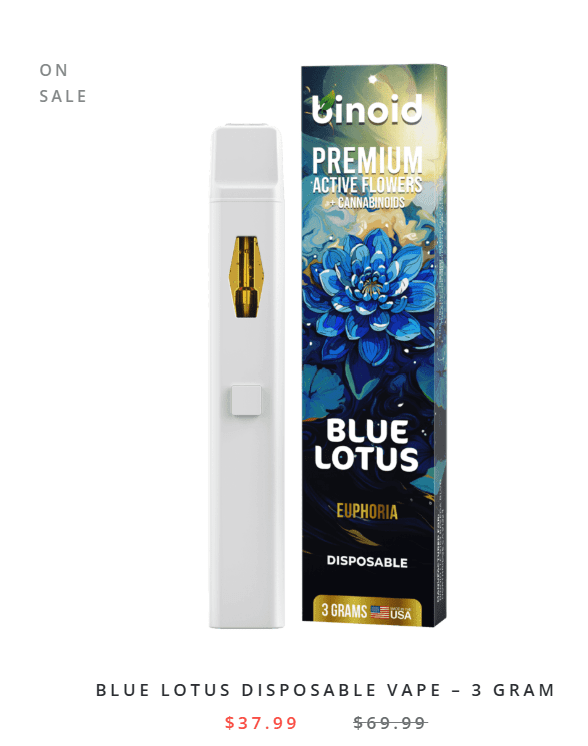
Contender #2: Blue Lotus
Transporting us from the modern laboratory to the sacred temples of the ancient world, our second contender, Blue Lotus, offers an experience rooted not in molecular chemistry but in millennia of spiritual and cultural reverence. Known to botanists as Nymphaea caerulea, this stunningly beautiful water lily was a cornerstone of ancient Egyptian society, symbolizing the very act of creation, the daily rebirth of the sun, and the pathway to the divine. Its delicate blue and gold petals graced the courts of pharaohs and the altars of priests, cherished for its ability to induce states of profound peace and heightened awareness.
The journey offered by Blue Lotus is fundamentally different from that of any cannabinoid; it is not a potent, euphoric “high,” but a gentle and subtle unfurling of the mind. It is a key to a serene and dreamy state, a tool for quieting the noise of the world and accessing a more tranquil, introspective consciousness. To partake in Blue Lotus is to connect with a timeless botanical tradition.
Blue Lotus, which is more accurately a type of water lily than a true lotus, derives its unique properties from a pair of primary alkaloids contained within its petals and stamens: apomorphine and nuciferine. These compounds interact with the human body in a way that is distinctly different from cannabinoids. Apomorphine is what is known as a non-selective dopamine agonist, which means that it activates dopamine receptors in the brain. This action is associated with its mood-lifting and calming effects. Nuciferine, on the other hand, is thought to have properties that contribute to a sense of tranquility and physical relaxation.
The synergistic dance between these two alkaloids is what produces the signature Blue Lotus experience: a gentle, dream-like psychoactivity that is both calming and subtly euphoric. It does not produce the intense perceptual shifts associated with THC, but rather fosters a state of peaceful, lucid awareness. Users often describe a pleasant sensation of warmth, a quieted mind free from racing thoughts, and a deeper connection to their immediate surroundings.
The story of Blue Lotus is an epic tale woven deeply into the golden tapestry of ancient Egyptian history. For thousands of years, this flower was far more than just a beautiful plant; it was a central pillar of Egyptian cosmology, religion, and social life. The flower’s unique behavior—opening its petals to the morning sun and closing them again at night to sink below the water—was seen as a powerful metaphor for the fundamental cycles of life, death, and rebirth. It was directly linked to the creation myth, wherein the sun god Ra was said to have first emerged from the heart of a blue lotus that blossomed from the primordial waters.
This divine association made it a ubiquitous symbol in Egyptian art, seen in countless tomb paintings, hieroglyphic carvings, and on decorative objects. Pharaohs and queens are depicted holding the flower to their noses, inhaling its sacred fragrance, which was believed to be a pathway to the divine. It was also famously infused into wine, creating a potent elixir that was consumed at festivals and religious ceremonies to induce states of blissful ecstasy and spiritual insight. With the decline of the Egyptian civilization, the esoteric knowledge of the Blue Lotus faded for centuries, only to be rediscovered in modern times by those captivated by its rich and mystical legacy.
The contemporary revival of Blue Lotus has seen it adapted into a diverse range of product forms, making this ancient botanical more accessible than ever before. While traditional preparations like teas and wine infusions are still popular among purists, modern manufacturing has introduced convenient and user-friendly formats that cater to a broader audience.
These innovative products capture the essence of the flower, allowing individuals to explore its calming properties in ways that seamlessly integrate with a modern lifestyle. This diversification has been instrumental in the flower’s resurgence, transforming it from a historical curiosity into a relevant and beloved part of the contemporary wellness and ethnobotanical landscape:
-
Dried Flower: This is the most authentic and versatile form, consisting of the dried whole flowers or just the petals and stamens. Users can brew the dried flower into a fragrant, calming tea, which is the most traditional method of consumption. It can also be ground and smoked or vaporized, either by itself or blended with other herbs, offering a more immediate onset of its gentle effects. This form appeals to those who enjoy a hands-on, ritualistic engagement with their botanicals.
-
Disposable Vapes: Leveraging the convenience of modern technology, Blue Lotus extract is now widely available in disposable vape pens. These sleek devices offer a smoke-free and highly discreet way to enjoy the flower’s properties. The extract is gently heated into an inhalable vapor, providing a rapid delivery of its calming alkaloids. These vapes are often enhanced with natural flavors and may be combined with other complementary botanical extracts.
-
Pre-Rolls: For individuals who enjoy the experience of smoking but prefer to skip the preparation, pre-rolls are the perfect solution. These are ready-made joints filled with ground Blue Lotus flower. Often, they are blended with other synergistic herbs like damiana, mugwort, or lavender to create a more complex aromatic profile and a more nuanced relaxing effect. They offer a simple, grab-and-go way to enjoy this ancient flower.
-
Gummies: One of the newest and most popular innovations, Blue Lotus gummies provide a tasty, precisely dosed, and smoke-free way to consume the flower’s extract. Each gummy contains a specific milligram amount of the active compounds, allowing for consistent and predictable experiences. Because the extract is absorbed through the digestive system, gummies have a slower onset but provide a longer-lasting period of gentle tranquility, making them ideal for sustained relaxation.
A fascinating development in the modern botanical market is the art of combining Blue Lotus extract with the diverse world of cannabinoids. This practice is rooted in the concept of synergy, where the unique properties of different plants can work together to create an experience that is greater than the sum of its parts. The serene, dopamine-related effects of Blue Lotus’s alkaloids can be skillfully paired with the cannabinoid system-targeting effects of compounds from the hemp plant. For example, blending Blue Lotus with non-psychoactive cannabinoids like CBD or CBN can create a powerful combination aimed at profound relaxation and physical ease.
When combined with a gentle psychoactive cannabinoid like Delta 8 THC, the result can be a uniquely blissful and dreamy state of mind that is both uplifting and deeply calming. For the more adventurous user, blends with potent cannabinoids like THCA Liquid Diamonds or THC-P aim to create a multi-layered and intensely profound journey, where the lucidity of Blue Lotus might serve as a grounding force for the powerful effects of the THC analogs. These thoughtful formulations are pushing the boundaries of customized botanical experiences.
The exploration of synergistic blends does not end with cannabinoids; Blue Lotus is also being thoughtfully combined with extracts from various mushrooms, another category of powerful natural agents. This trend is especially appealing to individuals interested in deepening their practices of meditation, introspection, and dream exploration. The most notable of these pairings is with extracts derived from the Amanita muscaria mushroom. While this iconic mushroom has a complex history, modern extracts are often processed to harness its calming and dream-inducing properties, which are attributed to the compound muscimol.
When the tranquil essence of Blue Lotus is combined with the oneirogenic (dream-enhancing) qualities of Amanita extract, the result is a potent blend designed for nighttime use. Users of these combinations often seek deep states of relaxation, heightened dream clarity and vividness, and a unique pathway for inner exploration, making this pairing a choice for the experienced ethnobotanical enthusiast.
The principle of creating harmonious blends extends to pairing Blue Lotus with a variety of other beneficial flowers and herbal extracts. Formulators often select botanicals with complementary properties or similar historical uses to craft a more holistic and well-rounded final product. This practice reflects a deep understanding of traditional herbalism. For instance, Blue Lotus is frequently combined with its botanical cousins, Pink Lotus (Nelumbo nucifera) or White Lotus (Nymphaea ambo).
These blends aim to offer a fuller spectrum of the calming and mood-lifting qualities associated with these revered water lilies. Another very common ingredient in Blue Lotus blends is Passionflower (Passiflora incarnata), an herb with a long history of use for promoting a sense of calm and relaxation. The addition of Passionflower can help to ground the ethereal, dreamy effects of the Blue Lotus, adding a deeper layer of physical tranquility that makes the blend exceptionally suitable for unwinding and achieving a state of peace.
In the United States, the legal framework surrounding Blue Lotus is remarkably simple and permissive, standing in stark contrast to the intricate and often contradictory laws governing cannabis and its derivatives. At the federal level, Blue Lotus (Nymphaea caerulea) is not classified as a controlled substance. This means that for the vast majority of the country, the plant, its extracts, and various consumer products containing it are perfectly legal to cultivate, possess, buy, and sell.
This lack of federal prohibition has allowed a flourishing and accessible market to emerge, with Blue Lotus products readily available through online retailers, specialty herb stores, and local smoke shops. There is, however, one very significant and well-known exception: the state of Louisiana. In Louisiana, the law specifically prohibits the cultivation, sale, and possession of Nymphaea caerulea if it is intended for human consumption. For residents outside of Louisiana, Blue Lotus can be enjoyed without legal fear, though it is always a prudent measure to be aware of any hyper-local ordinances that might exist.
The signature effects of Blue Lotus are celebrated for their subtlety, gentleness, and profoundly calming nature. The experience is not one of overwhelming intoxication but of a graceful transition into a more serene and peaceful state of being. It often begins with a soft wave of physical relaxation that seems to dissolve bodily tension, which is frequently described as a pleasant warmth or feeling of lightness. Mentally, its most prized attribute is its ability to quiet the “monkey mind”—the endless stream of internal chatter and anxious thoughts. This quieting effect leads to a state of calm clarity and peaceful awareness, making it an exceptional aid for mindfulness.
While it is certainly psychoactive, it does not typically distort reality or impair cognitive function. Instead, users report a mild and pleasant euphoria, a dreamy quality to their thoughts, and a subtle enhancement of their sensory perception. This unique profile makes it a favored companion for activities like meditation, yoga, creative pursuits, or simply quiet reflection. Furthermore, its well-documented ability to enhance the vividness and lucidity of dreams makes it a popular botanical to consume before sleep.
Recommended products
Pros & Cons
To fully appreciate the unique position Blue Lotus holds in the world of botanicals, one must consider both its celebrated strengths and its inherent limitations. Its appeal is ancient and deep, tied to a promise of gentle tranquility and spiritual connection. Yet, as with any substance that alters consciousness, a balanced perspective is crucial. Examining the pros and cons allows a prospective user to align their expectations with reality and to make a choice that is both informed and intentional, ensuring their journey with this sacred flower is a positive one.
Pros:
-
Gentle and Manageable Effects: The foremost advantage of Blue Lotus lies in the subtle and non-overwhelming nature of its psychoactive experience. It ushers in a state of calm and mild euphoria without the intensity or potential for paranoia that can accompany more potent substances. This makes it an ideal choice for those new to psychoactive botanicals or for anyone seeking a gentle aid for relaxation that won’t be incapacitating.
-
Broadly Legal and Accessible: Outside of Louisiana, Blue Lotus enjoys a legal status that makes it incredibly easy to obtain. It is not federally regulated as a controlled substance, allowing it to be sold openly by a wide range of online and retail vendors. This accessibility removes the legal risks and complexities associated with navigating the patchwork of state-by-state cannabinoid laws.
-
Rich Historical and Spiritual Significance: Using Blue Lotus is an act of participating in a tradition that spans millennia. Its deep and profound connection to ancient Egyptian spirituality, where it was revered as a symbol of creation and a key to the divine, adds a layer of meaning and reverence to the experience that is unmatched by modern products. This historical weight can transform its use from simple consumption into a mindful ritual.
-
Excellent for Meditation and Mindfulness: The mind-quieting properties of Blue Lotus make it a superb tool for enhancing meditation, yoga, or any practice that requires a calm and focused state. By helping to mute the internal monologue and reduce mental clutter, it can allow users to achieve deeper states of presence and introspection.
-
Potential for Vivid and Lucid Dreaming: One of the most unique and sought-after benefits of Blue Lotus is its reported effect on the dream state. Many users find that consuming it before sleep leads to dreams that are more colorful, memorable, and easier to consciously navigate (lucid dreaming). This makes it a fascinating tool for those interested in exploring their subconscious mind.
-
Versatile Consumption Methods: Blue Lotus offers a wide array of consumption options to fit any preference. From the traditional ritual of brewing a tea to the modern convenience of a disposable vape or a tasty gummy, users can choose the method that best suits their lifestyle. This flexibility ensures that anyone can find a comfortable way to experience its benefits.
-
Synergistic Blending Potential: The gentle nature of Blue Lotus makes it an excellent complementary ingredient in herbal blends. It pairs beautifully with other calming botanicals like passionflower, as well as with various cannabinoids and mushroom extracts, allowing for the creation of complex and tailored experiential profiles.
-
Generally Clear-Headed and Non-Impairing: While it induces a dream-like state, Blue Lotus does not typically cause the cognitive impairment associated with many other substances. Users often report feeling relaxed yet clear-headed and fully functional, allowing them to enjoy a tranquil state without sacrificing their mental acuity.
Cons:
-
Subtle Effects May Disappoint Some: For those accustomed to the potent and unmistakable effects of THC, the subtlety of Blue Lotus can be underwhelming. Its influence is gentle and requires a certain degree of mindfulness to fully perceive and appreciate. Users seeking a strong, recreational “high” will likely find it lacking in intensity.
-
Lack of Modern Scientific Research: Despite its thousands of years of historical use, Blue Lotus has been the subject of very little modern clinical research. There is a scarcity of scientific data on its long-term effects, precise mechanisms of action, and potential interactions with medications. Users must proceed based on anecdotal evidence and traditional knowledge.
-
Unregulated Market Leads to Quality Variance: The market for Blue Lotus products is largely unregulated by any government body. This can lead to significant inconsistencies in the quality, potency, and purity of products from different vendors. It is incumbent upon the consumer to find reputable sources that provide lab testing to ensure their products are clean and accurately labeled.
-
Illegal in Louisiana: The specific prohibition on Blue Lotus for human consumption in the state of Louisiana is a major drawback for residents there. It also serves as a reminder that even for federally legal substances, state laws can create exceptions, and it is always important to be aware of local regulations.
How to Go About Choosing Which Option
The journey into the world of botanicals is deeply personal, and the choice between THCA flower and Blue Lotus is less about which one is superior and more about which one resonates with your desired experience and intention. These two plants offer distinctly different paths to altered states of consciousness and relaxation. One is a product of modern science, delivering a powerful, euphoric, and sensory-enhancing journey, while the other is an ancient key to a world of subtle, dreamy tranquility and introspection. Making the right choice requires a moment of self-reflection. Consider what you are seeking: Is it a potent, recreational lift for a social evening, or a gentle, meditative aid for a quiet night of reflection? Your answer will be the compass that points you toward the flower that best suits your purpose.
|
Feature |
THCA Flower |
Blue Lotus |
|---|---|---|
|
Primary Active Compounds |
Tetrahydrocannabinolic Acid (THCA), which converts to Delta 9 THC |
Apomorphine & Nuciferine (alkaloids) |
|
Method of Activation |
Requires heat (decarboxylation) to become psychoactive |
Active in its natural state; can be brewed, smoked, or extracted |
|
Typical Experience |
Potent, euphoric, psychoactive, sensory-enhancing, can be intense |
Gentle, calming, dreamy, lucid, mildly euphoric, tranquil |
|
Cultural History |
A modern product of 21st-century cannabis science and legal evolution |
Ancient botanical with over 3,000 years of use in Egyptian spiritual traditions |
|
Legal Status (U.S.) |
Federally compliant as hemp, but legality varies by state (Total THC laws) |
Federally legal and unregulated in most states, except Louisiana |
|
Common Forms |
Dried flower, pre-rolls, concentrates (moonrocks, snowballs) |
Dried flower, teas, extracts, vapes, gummies |
|
Best Suited For… |
Users seeking a powerful, authentic cannabis experience; social settings; recreation |
Users seeking gentle relaxation, meditative states, dream enhancement; quiet reflection |
Ultimately, choosing between THCA flower and Blue Lotus comes down to aligning the plant’s profile with your personal goals, so…
-
Choose THCA Flower if: You are looking for a potent, classic cannabis experience. If your goal is significant euphoria, a noticeable shift in perception, and a powerful body high, THCA flower is the more direct route. It is ideal for recreational use, sharing with friends who are experienced with cannabis, or for moments when you want a strong and unmistakable effect to elevate your mood and enhance your senses. If you enjoy the ritual of smoking or vaping and appreciate the complex terpene profiles and strain diversity of modern cannabis, THCA flower will feel familiar and satisfying.
-
Choose Blue Lotus if: You are seeking a more gentle and spiritual or meditative experience. If your aim is to quiet your mind, ease into a state of deep relaxation, or enhance your meditation or creative practices without intense intoxication, Blue Lotus is the superior choice. It is perfect for quiet evenings, personal reflection, and for those who are sensitive to THC or wish to avoid its powerful psychoactive effects. If you are intrigued by ancient history and the idea of using a botanical as a tool for introspection and dream exploration, Blue Lotus offers a unique and profound journey.
The Final Petal: Charting Your Own Botanical Course
The paths laid before us by THCA flower and Blue Lotus diverge, yet both lead toward horizons of expanded awareness and personal discovery. One is a testament to human ingenuity, a clever navigation of chemistry and law to unlock a powerful, vibrant euphoria. The other is a whisper from the past, a sacred relic that offers a key to serene, dream-like states of tranquility revered by ancient civilizations. Your choice is not a simple preference for one plant over another; it is a declaration of your intended journey. It’s about deciding whether you wish to ride the meteoric rise of modern cultivation or float gently down a timeless, sacred river. Whichever petal you choose to embrace, may it guide you toward the experience you seek, enriching your understanding of the profound connection between the natural world and our own consciousness.

